#e 65
Text
me realizing that my last couple of posts have just been murderdock </3


118 notes
·
View notes
Text


a scene from 'you always kill my (sugar) high' by @pomegranate-belle 👍 it's a fic in the murderdock zine!!!! buy it!!!! i have not been normal since!!!!
#matt murderdock#murderdock#gwen stacy#gwen stacy spider woman#gwen stacy art#gwen stacy fanart#gwen stacy comics#spider gwen#ghost spider fanart#ghost spider art#ghost spider#ghost spider comics#spider woman comics#spider woman#e 65#earth 65 matt murdock#earth 65 gwen stacy#earth 65#e 65 gwen stacy#e 65 matt murdock
67 notes
·
View notes
Text




I've made too many concept pieces for Pathetic so I decided to just put them all here.
70 notes
·
View notes
Text
EARTH 65 I MISS YOU
7 notes
·
View notes
Text

so basically I watched a crime (can't call it 'organized crime' lmao) related movie and now i can't stop thinking about an AU for Earth-65 based on it so I even drew my main marvel OC (Ria) redesigning her for that AU
(some screenshots from the movie)

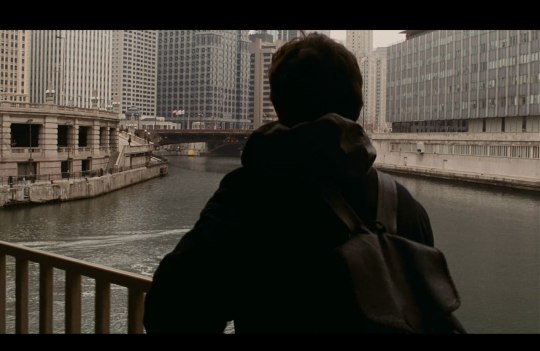
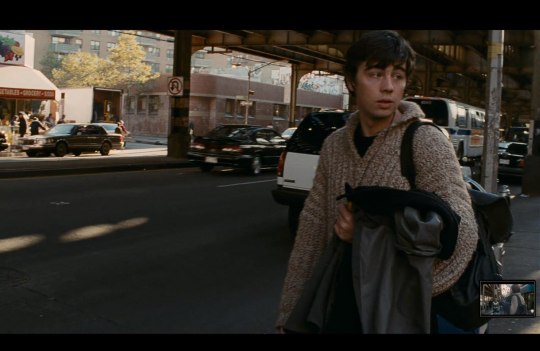



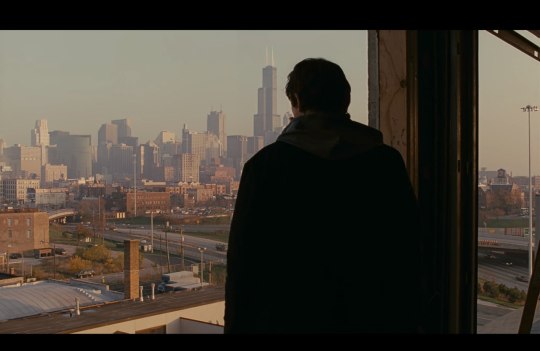

4 notes
·
View notes
Photo

DK 3 - E 65 between Szczecin and Świnoujście, West Pomeranian Voivodeship, Poland by aligator666
4 notes
·
View notes
Text
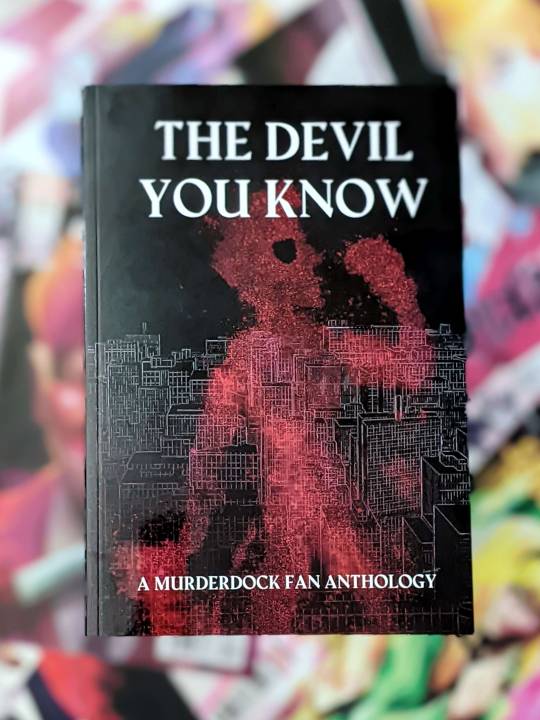


"The Devil You Know" now available for purchase!
Spider-Gwen may be the most famous resident of Earth-65, but her dimension wouldn't be half as much fun without the awful and unlawful Matt "Murderdock", Kingpin of New York City. Talented fans have come together to create this one of a kind fan anthology featuring over a dozen never-before-seen stories, illustrations, and comics all centered around the silver tongued devil we've come to love, as terrible as he may be.
Proceeds from this project will be donated to the Hawai'i Community Foundation in aid of recovery from the Maui wildfires.
Physical copies available here
Digital (PDF) version available here
#murderdock#matt murdock#matt murderdock#earth-65#e-65#spider-gwen#foggy nelson#mattfoggy#daredevil#zines#marvel zines#daredevil fanart#daredevil fanfic#daredevil zines#charity zines#signal boosts welcome!#id in alt text
249 notes
·
View notes
Text


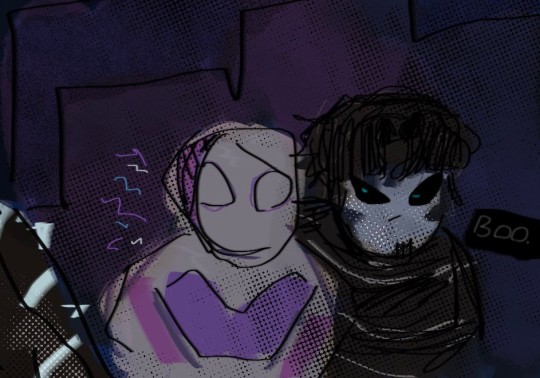

in another universe
#gwen stacy#matt murderdock#samuel chung#blindspot#daredevil#ghost-spider#e-65#art#doodles#undescribed
96 notes
·
View notes
Text

MURDERDOCKTOBER CONTINUES
Day 2: Pumpkins
#murderdocktober 2023#matt murdock#murderdock#foggy nelson#earth-65#e-65#id in alt text#mattfoggy#mattfoggy 65
123 notes
·
View notes
Text
Hair clips of the sun.
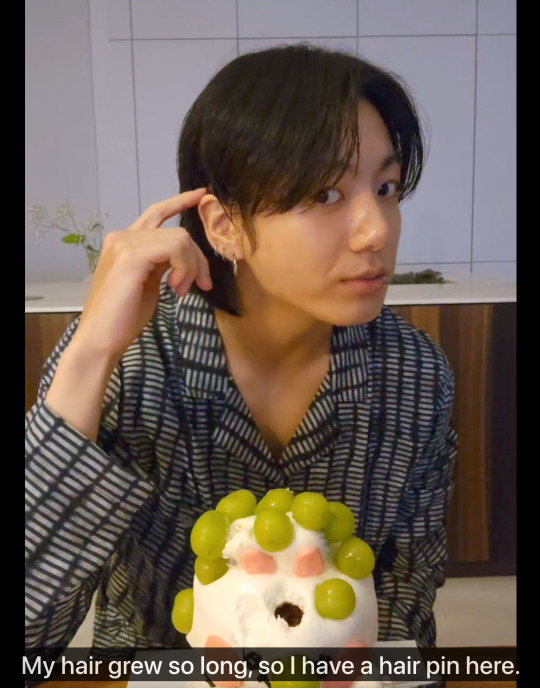

Jungkookie had little hair clips in his hair during his birthday weverse live on Sept. 1, 2022.
This was the live when Jin brought him a crate of grapes and then molested JK's bunny birthday cake with them. And during this live we found out that Jimin and Hobi were JK's only visitors that day.

Even JK thought the hair clips were cute... what's that you say? Not hair clips? E-clips? OOHHHH. EEEE-clipse of the sun.
Well... Jungkookie did say he EXPRESS ordered them. So technically they were e-clips.
Never mind then.
#a dad joke and an eclipse joke all in one#jin would be proud?#65 more days before Jin is back.#e-clips of the sun#get it?#jungkook#our sun and our other moon#anyway...#gotta be deep deep into bts to get that joke
49 notes
·
View notes
Text
get apple'd
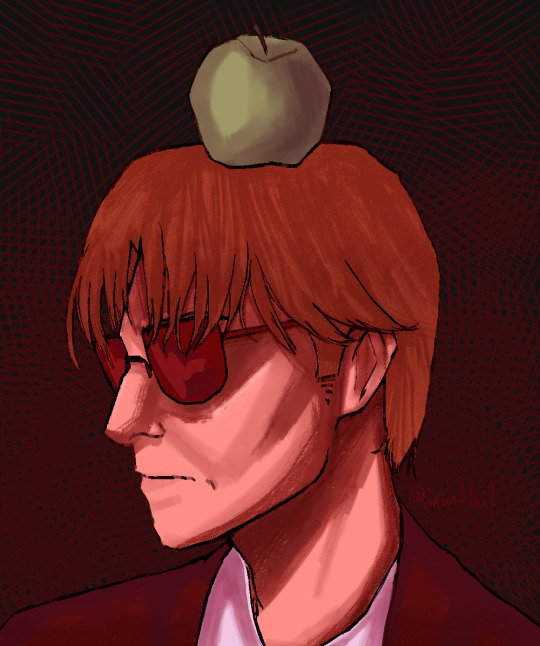
56 notes
·
View notes
Text
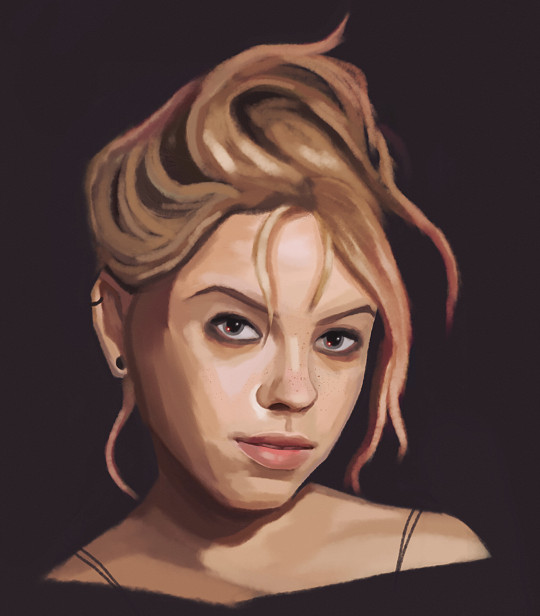
girl lets invest in a claw clip
#spider gwen#earth 65#gwen stacy#ghost spider#ghost spider fanart#gwen stacy art#gwen stacy fanart#spider gwen comics#e65#e 65 gwen stacy#earth 65 gwen stacy#e 65#spider gwen fanart#spider gwen art#gwen stacy spider woman#gwen stacy comics
20 notes
·
View notes
Text
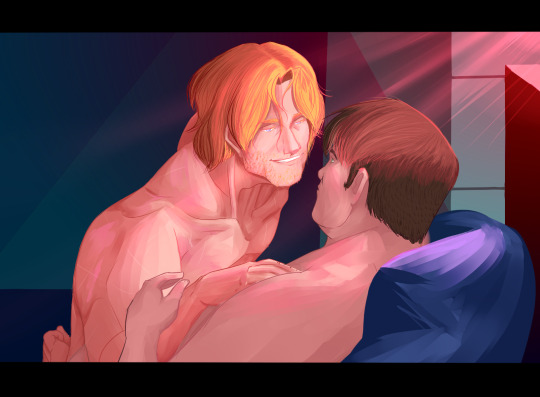
"Stay."
#e 65#earth65#e-65#murderdock#da nelson#matt murdock#foggy nelson#au#fan art#art#fanart#pathetic#my fics#yeah ik i could be writing but sometimes u gotta throw some art in#murderfoggy#mattfoggy
55 notes
·
View notes
Text

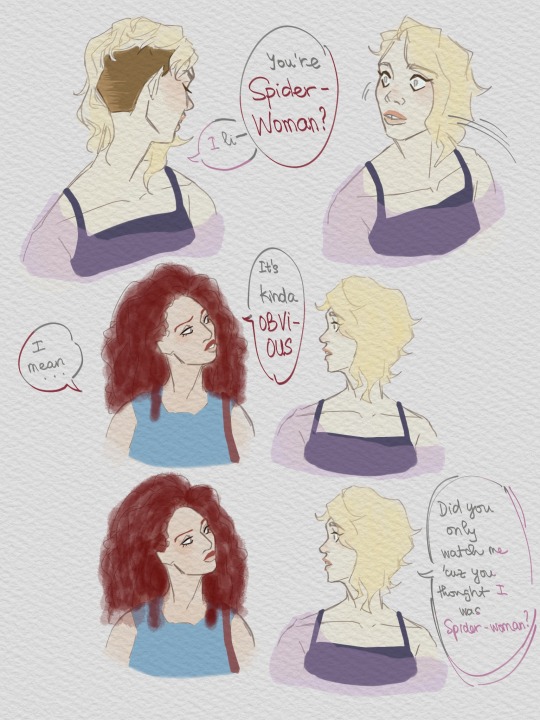

manifesting GwenMJ we all know gwen'll heal better if she realises she's not alone in her home world and starts to let people in
#made this a while ago#but couldnt finish lol#i love e-65 mj so muchhhh#gwenmj#guys we need a ship name#across the spiderverse#spider man: across the spider verse#gwen stacy#mary jane watson#could not find a clear image of MJ's bandmates so i hazard some guesses#yes this is a spiderman: far from home reference#miles morales#atsv fanart#spiderman#hobie brown#pavitr prabhakar
58 notes
·
View notes
Text


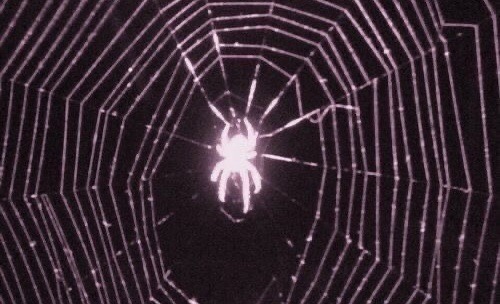
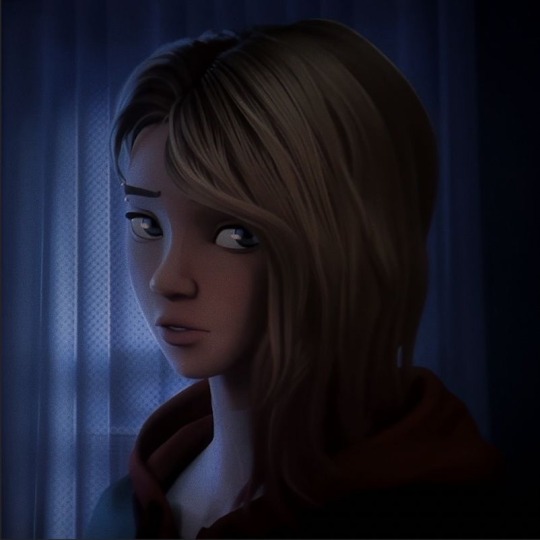

Gwen Stacy who always double knots her shoe laces so they don’t come loose when walking or swinging.
Gwen Stacy who’s low-key scared of little kids, especially like 2nd graders and up. They’re just mean man.
Gwen Stacy who’s gas station order is a bag of sour cream ruffles, trollis, and a can of monster.
Gwen Stacy who was a crunchy city kid.
Gwen Stacy who got her tooth gap by falling while running around when she wasn’t supposed to. Causing her to fall and hit her tooth on the ground effecting the way her permanent teeth grew in.
Gwen Stacy who’s very social anxious and second guesses most of her interactions after they happen.
Gwen Stacy who kinda gasped internally when she was how big Miles had gotten.
Gwen Stacy who can’t draw realistic or semi realistic for the life of her, but can draw super expressive stick figures.
Gwen Stacy who later looked the toy she opened in Miless’ room trying to reminisce on when she’d play with them. Then saw that his was a collectible and physical cringed realizing what she did (that hurt my sole i wanted to round house kick her so badly).
Gwen Stacy who made friends with animals at the park as a kid and cried when it was time to go home.
Gwen Stacy who loves Steven Universe.
Gwen Stacy who wanted to keep the hand print in her hair but couldn’t figure out how.
Gwen Stacy who gets bullied by kids on roblox.
Gwen Stacy who cried the first night she spent at Hobies’ place so they watched tv in the living room until they fell asleep.
Gwen Stacy who’s a friendship bracelet making machine!!!

I can’t stay mad at her…ugh! Anyways thank you for reading, if you have any requests or ideas you’d like to share feel free to submit!
#across the spiderverse#into the spider verse#spider woman#gwen stacy#spider gwen#ghost spider#gwen stacy headcanons#gwen stacy fluff#e!65 gwen#earth 65#earth65 gwen stacy#miles morales
46 notes
·
View notes
Note
Am I allowed to ask a longer question? (Take your time to answer. You're probably busy, aren't you?) You recently reblogged that post about Raffles not-being Edwardian. Why do you think that is important?
Of course! And as you see, I did take a good bit of time to answer - thank you for your patience. I have been very busy lately, but actually for mostly Raffles related reasons for once!
I do think that is very important if you want to get to the core of these stories, which is why it irks me whenever people toss the word "Edwardian" in there, and I believe that Hornung was very aware of the importance of it when he wrote them. To get to that core, we need to look at a theme that is very prominent in the Raffles stories: aestheticism.
Aestheticism was a movement that grew throughout the 1800s and reached its peak in Britain in the later part of the 1800s. The general idea was to separate art from morality and ethics; that art should be created for beauty and not for teaching morals - "art for art's sake". The movement took shape in most art forms and a had mainstream success in for example home decorating and furniture, but at the same time did not sit well with traditional Victorians, to whom art was very much entangled with morality. By the 1880s, the "aesthete" had become a character familiar enough to be parodied, such as illustrator George du Maurier did for Punch magazine in a number of illustrations during this time period.

One of the most important aesthetes in the 1880s and '90s was of course Oscar Wilde. With his writings, his speeches, the way he dressed and the way he lived his life in London society — including his "deviant" sexual life — he was pretty much the embodiment of the aesthetic movement (as well as of the decadent movement, which by the 1890s had become nearly synonymous with it). With the scandal of his conviction and imprisonment, the movement became more dangerous to be associated with, and more or less died out at the end of the century.
--Spoilers for the Raffles books in discussion below--
Now, Hornung very clearly paints Raffles as an aesthete. That is not something you might manage to painstakingly dig out through hours of deep analysis of the text - he very plainly lays it out in the first part of the very first story. While Raffles is pacing the floor contemplating how to solve Bunny's situation, Bunny is observing the state of Raffles' rooms and gives the reader a clear idea of his character:
"It was charmingly furnished and arranged, with the right amount of negligence and the right amount of taste. What struck me most, however, was the absence of the usual insignia of a cricketer’s den. Instead of the conventional rack of war-worn bats, a carved oak bookcase, with every shelf in a litter, filled the better part of one wall; and where I looked for cricketing groups, I found reproductions of such works as “Love and Death” and “The Blessed Damozel,” in dusty frames and different parallels. The man might have been a minor poet instead of an athlete of the first water. But there had always been a fine streak of aestheticism in his complex composition." ("The Ides of March", 1898)
Here Hornung uses the word "aestheticism", referring specifically to the art movement. In the next story, he has Raffles associate himself with it again:
"Does the writer only write when the wolf is at the door? Does the painter paint for bread alone? Must you and I be driven to crime like Tom of Bow and Dick of Whitechapel? You pain me, my dear chap; you needn’t laugh, because you do. Art for art’s sake is a vile catchword, but I confess it appeals to me." ("A Costume Piece", 1898)
Raffles is an artist, first and foremost. His cricketing is a cover: the amateur cricket player is the ultimate English gentleman, and so he cannot possibly be anything else! He is not driven to a life of crime because of poverty, or because of some tragic back story. "Cracking cribs" is his form of art, and it is "l'art pour l'art" all the way.
"Why should I work when I could steal? Why settle down to some humdrum uncongenial billet, when excitement, romance, danger and a decent living were all going begging together?" ("The Ides of March", 1898)
In other words: he very well could make a living in some other, conventional way, but that would not be exciting and romantic enough. Furthermore, it would not be in line with his character. In "A Costume Piece" he attempts to steal the purple diamonds not because, as Bunny puts it, there is any "necessity" for it, but because it is so tangled up with what he is that he simply cannot pass up the opportunity: "If I don’t have a try for them—after tonight—I shall never be able to hold up my head again."
Additionally, Hornung makes some rather striking parallels between Raffles' life and the life of Oscar Wilde. It is assumed but not confirmed that Wilde was a friend of Hornung; at least they moved in the same circles. In either case, there is no way to ignore the parallels Hornung drew. There are of course the similarities in appearance and character: clean shaven features, longish hair, charisma, a great talker, appreciation for beautiful things. (Add to this the young, fair-haired and also clean shaven writer companion with a temper and a cricket themed nickname). But then we have the facts (which I have laid out before) of Raffles and Bunny and Wilde all being arrested and facing their downfall in the spring of 1895; of Bunny going to prison and when he comes out, writes a series of articles on prison life, just like Wilde did; of Raffles taking the name of "Mr Maturin" when he comes back to London, while Wilde took the alias of "Melmoth" when he went into exile (author Charles Maturin was Wilde's great uncle, who wrote the gothic novel Melmoth the Wanderer - if any of the other points are negotiable, at least that last one would be purely ignorant to brush off as a coincidence). Hornung knew what he was doing, and he did it subtly but clearly. I for one often wonder if when Conan Doyle said the stories were "dangerous in their suggestion", he wasn't talking less about burgling and more about these themes they were so entwined with; because at the point of the first publication of Raffles, the aesthetic movement was rather dangerous to be associated with. The references to Wilde could on their own perhaps be seen as a mere tribute to a (possible) friend, but in the context of their time and in how Raffles is portrayed as a character, they become more significant.
Wilde is released from prison in 1897 (again, same year Bunny is released from prison and Raffles returns to London), and lives in exile for a few years before dying in Paris in 1900. Raffles and Bunny live in Ham Common before joining the Boer war; Raffles dies on the battlefield in 1900. Around the same time, aestheticism as a movement dies out as well. The fin-de-siècle era is over, and the Victorian era comes to an end with the death of the queen in early 1901.
I do not think it was a coincidence that Hornung had Raffles die along with the essence of the world he was a product of. Therefore, tossing the word "Edwardian" in there as a descriptor of the series seems to me to be careless and completely missing the point. Bunny lives on in the Edwardian era, but aside from a few very brief glimpses of his life there, the life he lead with Raffles was solely in the fin-de-siècle.
The TV series is also often described as Edwardian, but this is also not correct. The 14 episodes makes a point of staying in the Victorian era, whether or not this was considered important in the way I have described above. I don't know if one or another Edwardian trinket has snuck in there, but it is definitely still the 1800s by the final episode: in "An Old Flame" Raffles complains about wanting to "stay in the privacy of the 19th century for as long as possible", to which Bunny retorts "You haven't got long left". Philip Mackie's unpublished script for "Le Premier Pas" for the second series that was never produced actually takes place on Christmas 1899, "the last Christmas of the old century", confirming that the first series definitely was meant to be all Victorian. (The new series probably would have gone into the 1900s, but where it would have ended is anyone's guess, and is rather irrelevant since it was never actually made.) Just to what extent this was considered significant for the overall story and tone of the TV series, I cannot say (though I am actually doing some research on just that currently), but the point is that the TV series also is, in fact, Victorian and not Edwardian. Some other adaptations have of course broken the Victorian rule, but that is a whole other discussion.
In short: if you want to be true to Hornung's Raffles, the late Victorian era is rather a key element.
For anyone who wants to read more about Raffles and aestheticism (and can get access), I can highly recommend an academic article I have read recently by D. Michael Jones, called “E. W. Hornung’s Raffles and the English Aesthetic Movement: The Rhetoric of Romance Masculinity” (2016). I especially thought his take on the dynamic between Raffles and Bunny was really interesting. Also he kinda made me cry cause some of the things he said about Raffles was so spot on. Another relevant one is “Wilde Words: The Aesthetics of Crime and the Play of Genre in E. W. Hornung’s Raffles Stories” by Lee O'Brien (2015).
#crime and cricket#a j raffles#e w hornung#raffles and bunny#rafflesweek2023#<- i really meant to answer this during rafflesweek but i got so busy but better late than never#raffles canon#raffles tv series#discussion#aestheticism#i hope i answered your question and hope that you see this despite me replying to it 65 years after you sent it#also anyone feel free to add to this discussion
64 notes
·
View notes